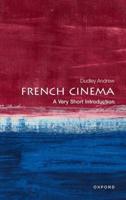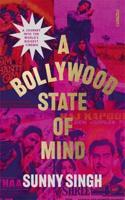Publisher's Synopsis
From Victor Frankenstein to Dr. Moreau to Doc Brown in Back to the Future, the scientist has been a puzzling, fascinating, and threatening presence in popular culture. From films we have learned that scientists are either evil maniacal geniuses or bumbling saviors of society. Mad, Bad and Dangerous? puts this dichotomy to the test, offering a wholly engaging yet not uncritical history of the cinematic portrayal of scientists.
Christopher Frayling traces the genealogy of the scientist in film, showing how the scientist has often embodied the predominant anxieties of a particular historical moment. The fear of nuclear holocaust in the 1950s gave rise to a rash of radioactive-mutant horror movies, while the possible dangers of cloning and biotechnology in the 1990s manifested themselves in Jurassic Park. During these eras, the scientist's actions have been viewed through a lens of fascination and fear. In the past few decades, with increased public awareness of environmental issues and of the impact of technology on nature, the scientist has been transformed once again-into a villainous agent of money-hungry corporate powers. Mad, Bad and Dangerous? also examines biographical depictions of actual scientists, illuminating how they are often portrayed as social misfits willing to sacrifice everything to the interests of science.
Drawing on such classic and familiar films as Frankenstein, Metropolis, and The Wizard of Oz, Frayling brings social and film history together to paint a much larger picture of the evolving value of science and technology to society. A fascinating study of American culture and film, Mad, Bad and Dangerous? resurrects the scientists of late night movies and drive-in theaters and gives them new life as cultural talismans.
Christopher Frayling traces the genealogy of the scientist in film, showing how the scientist has often embodied the predominant anxieties of a particular historical moment. The fear of nuclear holocaust in the 1950s gave rise to a rash of radioactive-mutant horror movies, while the possible dangers of cloning and biotechnology in the 1990s manifested themselves in Jurassic Park. During these eras, the scientist's actions have been viewed through a lens of fascination and fear. In the past few decades, with increased public awareness of environmental issues and of the impact of technology on nature, the scientist has been transformed once again-into a villainous agent of money-hungry corporate powers. Mad, Bad and Dangerous? also examines biographical depictions of actual scientists, illuminating how they are often portrayed as social misfits willing to sacrifice everything to the interests of science.
Drawing on such classic and familiar films as Frankenstein, Metropolis, and The Wizard of Oz, Frayling brings social and film history together to paint a much larger picture of the evolving value of science and technology to society. A fascinating study of American culture and film, Mad, Bad and Dangerous? resurrects the scientists of late night movies and drive-in theaters and gives them new life as cultural talismans.











